Our overnight stop in a car park designated for motorhomes in Reinsberg turned out to be better than we had expected, mainly due to the lovely castle grounds within a few metres, in which we could give the dogs a good walk.

Typical patched road!
Today we were aiming for Wittenberg, now officially called Lutherstadt Wittenberg, just over 20 miles away. Surely we could not fail to reach it with so little distance to cover. I shall break the suspense, we made it. Some of the roads were, yet again, testing Basil’s teutonic engineering to the limit and there were many more trees I was warned not to crash into.

Watch out for those trees!
We survived everything thrown at us and arrived unruffled in Wittenberg, The designated parking place for motorhomes was full, but even that didn’t matter because there were miles of empty streets around the town centre with no parking restrictions.
The reason I was so keen to visit Wittenberg is that, arguably, more than all the places we have visited or will visit this one town was the site of events which fundamentally changed Europe. It was here on October 31st 1517, almost exactly 500 years ago, that a monk called Martin Luther nailed his 95 theses to a church door in Wittenberg. Luther was initially angered by the sale of “indulgences”* by the Catholic church and the 95 theses were 95 academic points that he wished to debate with a representative of the Catholic church, of which he was then a member, about whether indulgences were supported by scripture.
Over the next few years, protected by the Elector of Saxony and supported by increasing numbers of academics, clergy, nobility, laity and perhaps most importantly with the assistance of the new printing industry, his views developed into what now known as Protestantism. The consequences of this are too many to expound here, except to say that the split between Protestants and the Roman Catholic Church, changed the face of Europe, and in the case of the United States, perhaps the world.
I was keen, therefore, to see some of the key sites where the events had taken place, but what I hadn’t known was that the allies avoided bombing Wittenberg, because of its significance, and as a result the centre of the town is a beautiful place full of old houses, churches and other buildings.
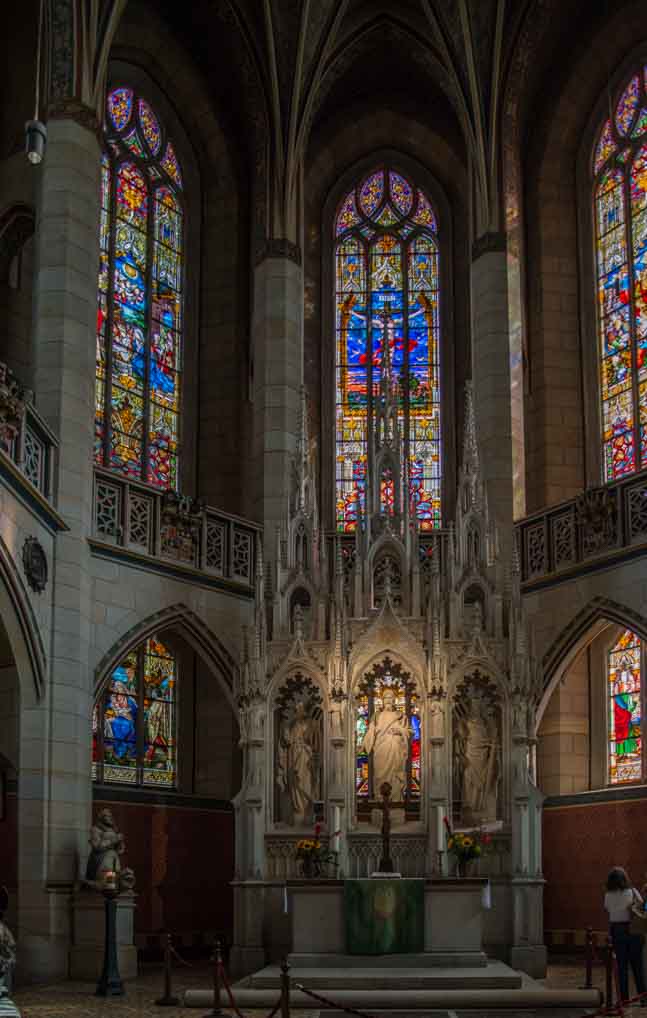
The Altar of the Castle Church
We visited the Castle Church where Luther had pinned his theses and where he, the Elector of Saxony and one of Luther’s main theological supporters, Phillip Melanchthon, are buried. The church itself is mostly later than Luther’s period, having been the subject of various fires and other misfortunes, but is nonetheless very attractive, especially the stained glass. The original doors upon which the theses were pinned have long since disappeared and have been replaced with nineteenth century brass doors on which the whole 95 theses are embossed.
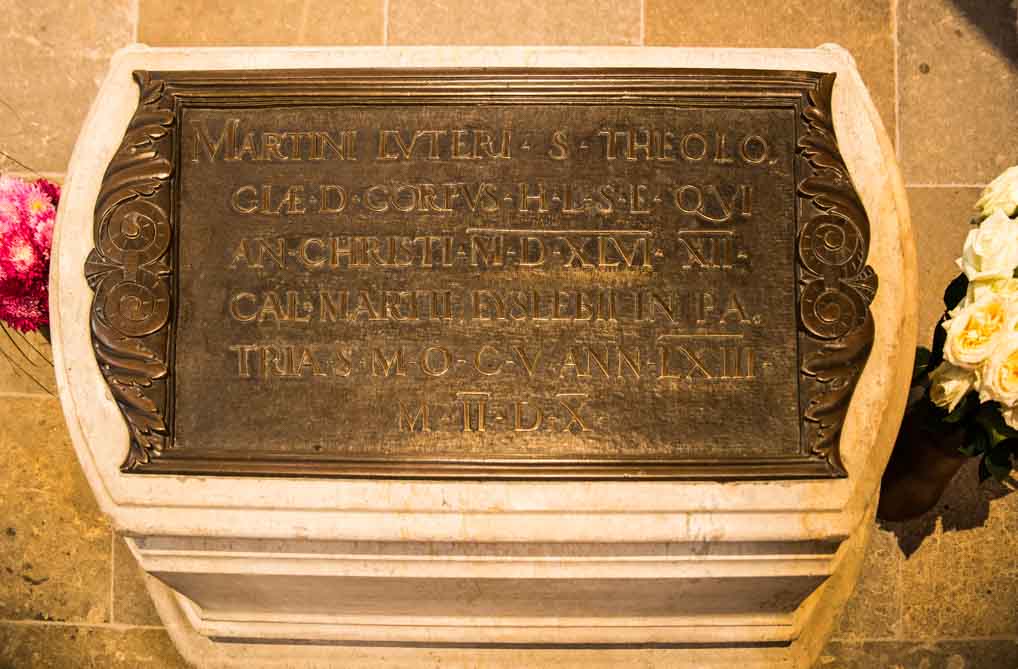
Luther’s Grave in the Castle Church
Luther’s house is still standing: he took over a wing of the monastery where he had been a monk, once he got married and had children – another major break from Roman Catholic theology.
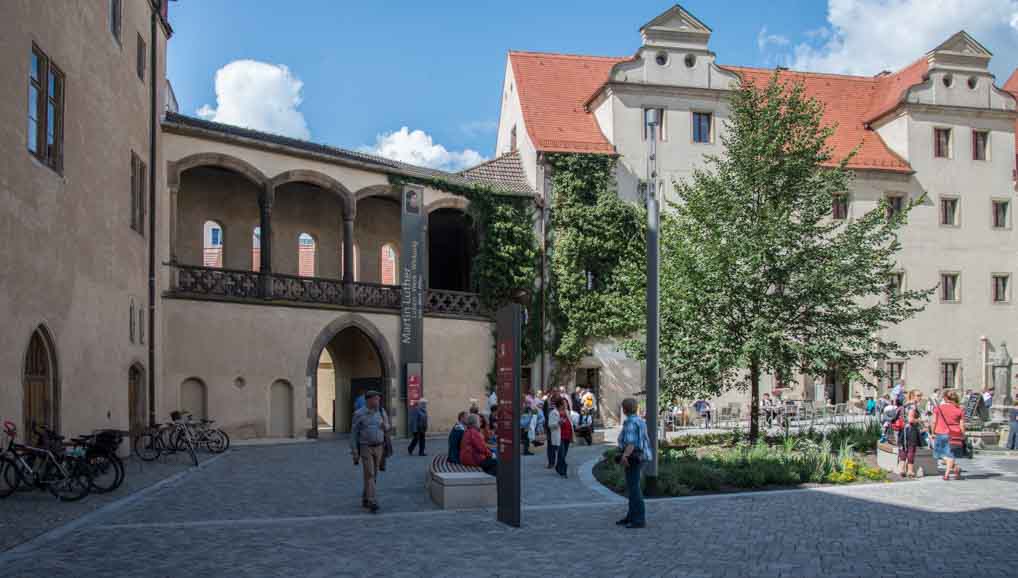
Luther’s House on the left within the old Augustine Monastery
Of all the buildings and monuments we viewed today the most poignant was Wittenberg’s rather plain town church, St. Mary’s, where Luther preached his sermons and in which many of the key developments in Protestantism took place. The church contains a collection of beautiful art works, including a lovely altar piece, by Cranach the Elder and Cranach the Younger. These two artists were also important in popularising Luther’s message, because their woodcuts, sometimes as part of Luther’s writings, sometimes on their own, were printed and circulated in huge numbers, spreading the new ideas to those who could not read.
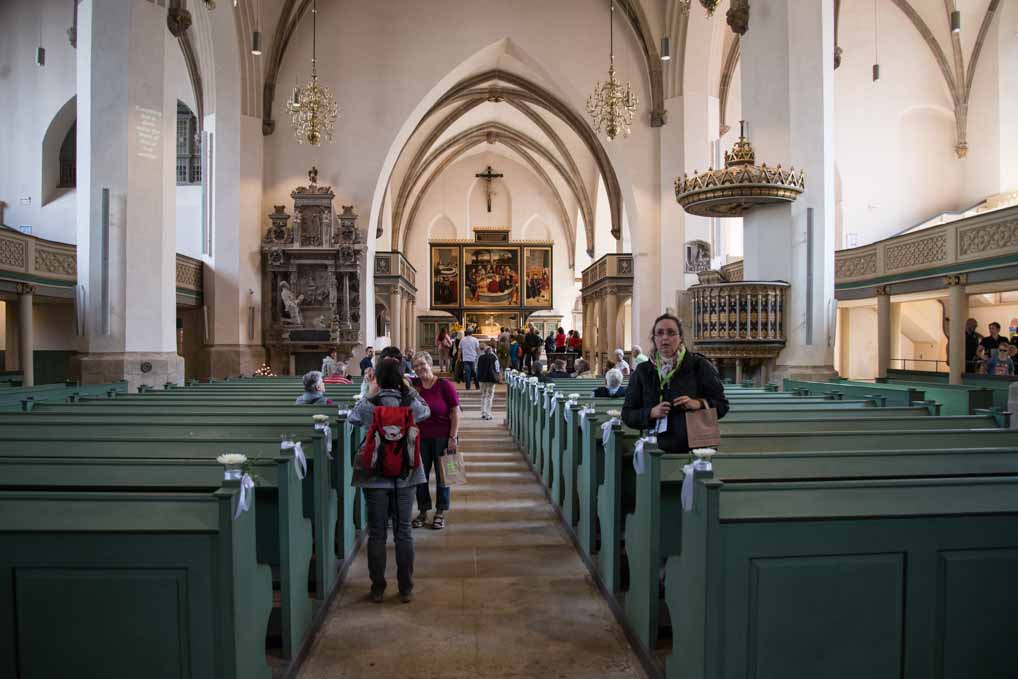
Inside St. Mary’s

Cranach the Elder’s Altarpiece. It depicts the main tenets of Protestantism. Note at the bottom Luther preaching at Christ’s Crucifixion
We thoroughly enjoyed our day in Wittenberg, but not just because of the connection with Martin Luther, but also because the whole town has been lovingly preserved. The whole of the central area, covering all the major places of interest, has been pedestrianised, which always makes visiting a town more pleasant.

Wittenberg Town Square, with the Town Hall on the left and St. Mary’s in the background
In summary, whether you have any interest in the Reformation and Martin Luther or not, Wittenberg is definitely a place worth going out of your way to visit. It has a great feel and is a pleasant place to spend a couple of hours or more just wandering around.
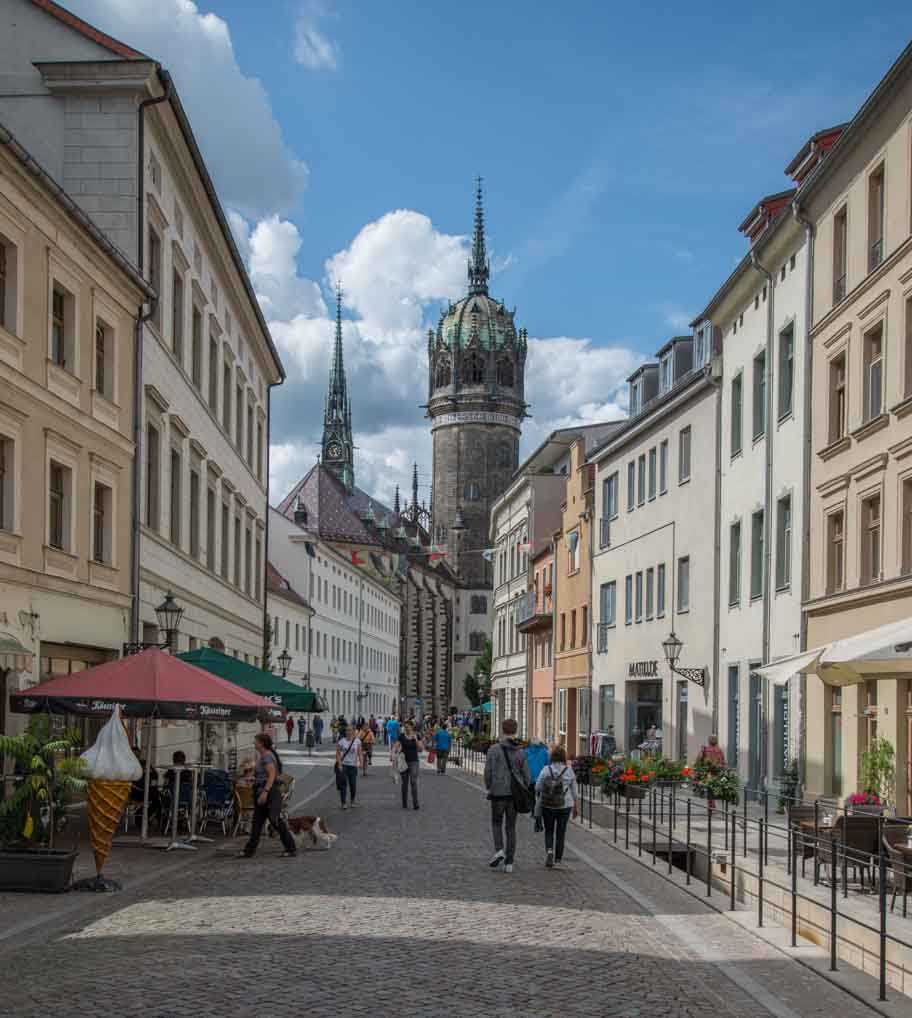
Wittenberg High Street with the Castle Church at the end
Having finished my homage to Martin Luther we set of for a nearby ACSI site. We approached it with some trepidation given how strange the previous caravan site had been, but we need not have worried. Bergwitz See Resort (51.791333, 12.570484) is a very nice site set in woods on the edge of a lake. It is €17 a night with ACSI and has all the facilities you would expect, including decent free wifi, at least where we are. There are plenty of caravans which do not look as if they have moved for years, but there is also a good sprinkling of genuine tourers.
Tomorrow we head for Meissen.
* Indulgences, at the time, were being sold by the Roman Catholic church and, to put it crudely, entitled the purchaser to reduced time in purgatory and therefore quicker entry into heaven. More controversially still, it was possible to buy indulgences on behalf of people who had already died! The money raised was used by the Roman Catholic church. The money from the indulgences which so upset Luther, was required by the then Pope to greatly expand St. Peter’s in Rome.
